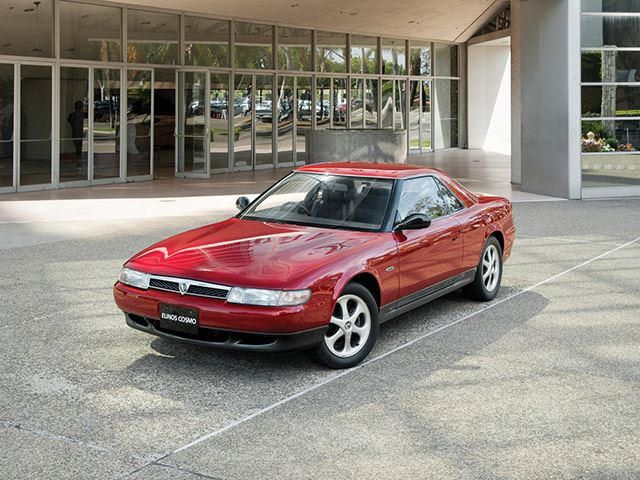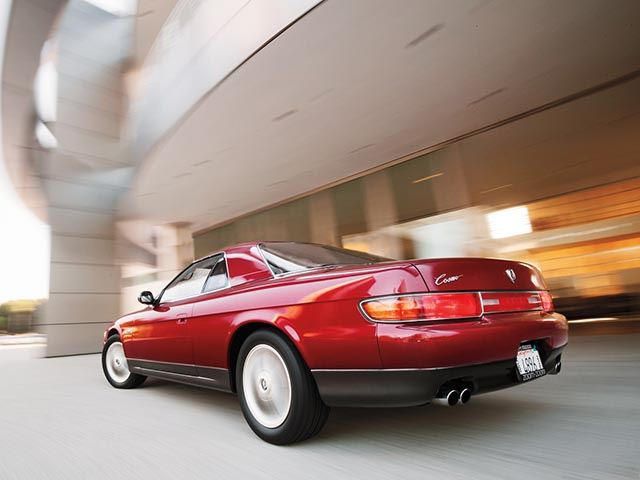
It's a big decision to not bring a car from Japan over to America. Sometimes the decision makes sense and other times it makes sense but still sucks. The car we're talking about today is the Eunos Cosmo JC. Eunos, known as Amanti in the US, was Mazda's doomed luxury line. The Cosmo debuted in 1967 and was a Mazda until the last-gen, the JC, debuted in 1990; production ended in 1995. The Cosmo JC was a front-engine rear-wheel-drive coupe with back seats. It weighed 3,600 pounds, had tiny and powerful engine options and was very expensive.
The car came with either a twin-rotor 13B-RE Wankel engine or the triple-rotor 20B-REW Wankel. Both engines were twin-turbocharged, but the 20B produced 300 horsepower and 280 lb-ft of torque at just 1800 rpm (compared to the 13B's 235 hp and 238 lb-ft). It was capable of 158 mph, although to comply with Japanese regulations it was electronically limited to 111 mph. Mazda hit a lot of milestones with the Cosmo JC, partly with its powertrain. The 20B was the largest rotary engine ever used in a car at the time (2.0 liters), and the Cosmo JC became the first ever twin-turbocharged rotary engine car. The RX-7 FD didn't have that until 1992. That thirsty engine was mated to a four-speed automatic gearbox because luxury.
The JC Cosmo is also, to date, the most expensive car Mazda has ever sold. In 1990 the JC could be yours for around $20,000 base, and with all the options checked off you would owe about double, putting you somewhere around the $45,000 range. In today's dollars, that's about $75,000, putting the JC into the same level as a Mercedes or BMW. But those options included GPS (GPS!) and an awesome interior design. Almost 9,000 JCs were sold before production stopped in September of 1995. By this time the Cosmo no longer complied with Japan's size regulations and that meant paying yearly taxes for driving a car that was too big. This of course hurt sales.
Since it was made RHD it's possible Japan didn't want to make a left-hand version to be sold in America. What's more possible is that the automaker was scared that its high price and heritage (still a Mazda) were a crap combo abroad. With its hefty price tag, large size, crap fuel economy, ridiculous engines, and the fact that it only has two doors, the question isn't why was this car never sold in America. Rather, the question becomes why was the car made at all? Japanese cars are known for being cheap and reliable. This car was not cheap, and the rotary engines bring its credibility for reliability into question. Did Mazda really think it could compete with Germany's big boys and utterly dominate the competition at home?


